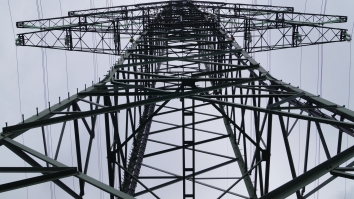
Indonesia must get $70-$80b gas investments to dodge shortage
As doemstic consumption growth beats supply.
Indonesia needs to invest $70 billion to $80 billion in gas infrastructure through 2030 to avoid a potential gas shortage, as domestic consumption growth outpaces supply, state-owned energy business Pertamina said Tuesday, according to S&P Global Platts.
An expanding economy and growing middle class are the key drivers of energy consumption, which continues to grow by around 4-5% a year.
Natural gas accounts for approximately 15% of the country's energy needs, and its growth is primarily supported by expanding demand from the power, refinery, fertilizer and transport sectors.
Here's more from S&P Global Platts:
"Indonesia needs new investment to explore and develop new gas resources and to build gas infrastructure," said Yenni Andayani, chairman of Indonesia Gas Society and acting president director of Pertamina.
"Gas infrastructure investment requires coordination with all stakeholders, incentives, competitive prices and a good domestic investment climate," he said, at the opening of the International Indonesia Gas Conference and Exhibition 2017.
Indonesia is a major LNG supplier, with Bontang, Tangguh and Donggi Senoro LNG facilities having produced a total of 18.83 million mt of LNG in 2016, up by 4.3% from the 8.05 million mt produced in 2015, according to Platts Analytics.
Of the total, 3.016 million mt was delivered to one of Indonesia's three import terminals supplying the highly populated centers of Java and Sumatra, up by more than 30% from 2.281 million mt received in 2015.
At current gas demand growth rates, there could be a supply gap of 27.9 Bcm by 2025, the equivalent of more than 20 million mt of LNG, Platts has previously reported.
The country, which has not yet imported LNG from the international markets, is to import 1.52 million mt/year from 2019, as part of a 20-year contract between Pertamina and Houston-based Cheniere Energy.
Indonesia's proven reserves stand at 3.7 billion barrels of oil and 101.54 Tcf of gas.
Crude oil production peaked at 1.6 million b/d in 1995 and has since been declining, owing to ageing fields and limited investor interest due to the country's complex bureaucracy and contract system. Indonesia produced 831,000 b/d in 2016.
Gas production is expected to rise to 9.35 Bcf/d over the next few years from 8 Bcf/d currently, but growth in demand is expected to outpace supply.























 Advertise
Advertise







